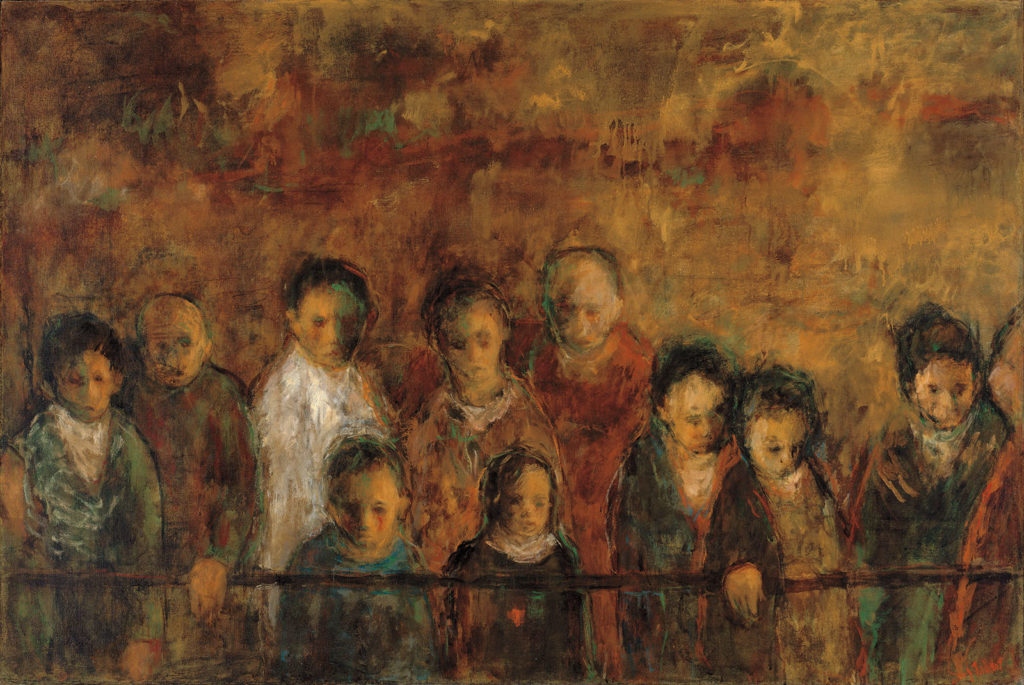What is it?
Artist
Joseph Friebert (Buffalo, New York 1908–2002 Milwaukee)
Title
Refugees
Year
1964
Medium
Oil on canvas
Dimensions
40 1/8 x 60 in.
Credit line
Gifted 2015, The Joseph and Betsy Ritz Friebert Family Partnership and The Kohler Foundation
About the Work
About
Even while he focused on semi-abstraction, Joseph Friebert continued to work figuratively. In the mid-1960s, he returned exclusively to a more representational approach. His painting style had changed, informed by his experience with abstraction. It had strengthened the design and structure of his compositions, freed up his brushwork, and allowed the “serendipitous” accident to take him places he had not envisioned. Moreover, Abstract Expressionism had reinforced his belief that the most important function of art is “to communicate feelings rather than stories. The . . . real subject of any art worth its salt is the artist himself.”
From the mid-1960s on, Friebert developed a highly personal, painterly manner, creating lyrical, often brooding landscapes and interiors, with and without people. He was drawn particularly to the subject of human alienation and displacement; in paintings, drawings, and prints, he depicted people and carts traversing across anonymous landscapes in processions that seemingly will never end. In Refugees, individualized figures pause on their journey to gather close to the picture plane; a thin railing separates them from viewers. Perhaps the barrier suggests our remove from such tragic, stateless people: we observe but do not engage. The refugees present themselves with dignity, despite the exhaustion and hopelessness that are painfully evident.
The melancholic and disquieting character of such works reflects the seriousness with which Friebert regarded the world and his profession. He was shaped by the economic and social traumas of his times. He had begun his career in the depths of the Great Depression, when artists were encouraged to make art that would help create a better society. He could never approach a canvas or a topic lightly. Moreover, he had great empathy for his subjects and wanted viewers to share it. It was his hope that the pathos of his refugees would encourage compassion and move us to humane action.

